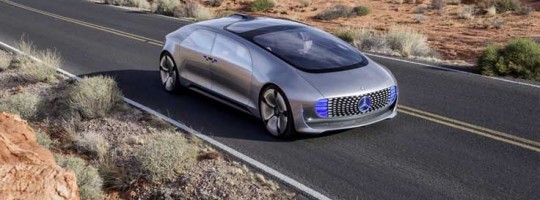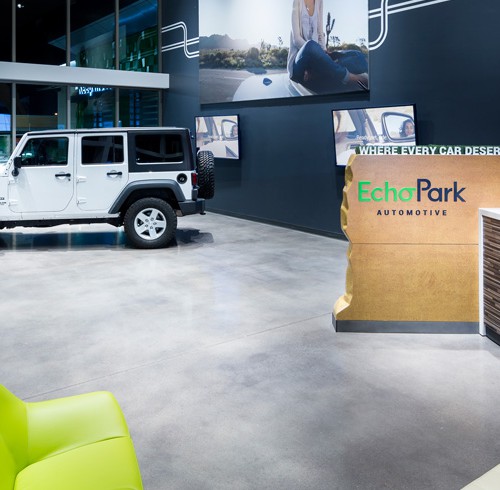Ford CEO Predicts The Future Of Self-Driving Cars

One of the hottest topics in the auto industry these days is autonomous cars. There is a race to define the future of transportation, and many new technology rivals are facing off against legacy car manufacturers for control of the changing landscape. Ford CEO Mark Fields spoke to reporters this week about his predictions for the future of the auto industry, including self-driving cars, ride-hailing services, and the company’s plans to develop innovative and advanced vehicles that can be available to everyone.
There’s no question that automakers such as Ford are increasing their focus on the future of autonomous vehicles. Fields predicts that fully self-driving cars, which don’t require a person to be able to take over the wheel, will reach the market within about 15 years. Certainly, the technological building blocks for autonomous vehicles are rapidly evolving, and automakers want to position themselves to be at the forefront of these developments.
“Camera technology is moving along very fast,” said Fields. “Algorithms are advancing very fast.” He continued by saying that certain forms of advanced autonomous parking are going into production now, which he wouldn’t have expected five years ago.
Google is one company that has popularized the concept of robotic cars, and many other automakers have initiatives in the works. Fields says that while Ford has its own autonomous cars in research settings, the company has a nuanced view of the concept. He discussed autonomous vehicles across the spectrum of several levels, which are classified from zero to 4 by the National Highway Traffic Safety Administration. Level 1 includes adaptive cruise control and safety features to avoid accidents, which already exist today. Level 4 is the idea of pressing a button in a completely self-driving car where you could sleep during the trip and arrive without any human intervention. Level 4 is described by the NHTSA as a scenario that “anticipates that the driver will provide destination or navigation input, but is not expected to be available for control at any time during the trip. This includes both occupied and unoccupied vehicles.”
“When you think about it we have a lot of the building blocks for autonomous vehicles, but there’s a rate and flow of development that’ll determine how quickly that comes along,” said Fields.
There are many cars that are either currently available or that are expected to hit the market soon that offer one or two autonomous features, such as adaptive lane control. Currently, many automakers are testing vehicles with level 3 automation, in which “the driver is expected to be available for occasional control, but with sufficiently comfortable transition time.” The NHTSA describes the Google Car as an example of level 3-vehicle automation. Google has said that it expects its technology to be ready for the consumer market by 2017, and several car companies have stated their expectations for similar technology to be ready by 2020.
But when will level 4 car automation hit the market?
Truly, this is a difficult question to answer. The implications of fully self-driving cars are massive, with the potential to redefine many aspects of transportation and cars altogether. The possibilities for radically new forms of shared vehicle ownership and use, the potential effect on car design and insurance, and the core idea of being driven instead of driving are some of the key elements that must be considered when discussing the future of self-driving vehicles.
In addition to the societal acceptance and governmental regulation questions, there are certainly technical issues to consider as well. “Our view is that for full autonomy, you’d need cameras, radar, sensors, rider systems, algorithms to coordinate data and compare it to 3D mapping dynamically,” said Fields. He feels that although there will be settings where autonomous transport could work, the self-driving tech dream has a long way to go before it comes to fruition.
What does Fields think about innovative companies such as Tesla?
“We can learn something from everyone and we never think a competitor is too small,” said Fields. He said that Tesla has raised the awareness of electric vehicles and considers that to be a good thing. Fields also said that Ford can learn from how Tesla interacts with its customers via technology. However, he says that the biggest takeaway from Tesla is how to think like a startup.
“[Tesla] is endemic of how startups think,” Fields told reporters. “We’re really encouraging everyone in our company to think like a startup. We want people to challenge custom and question tradition, we want them to not take anything for granted. We want them to ride the technology curb where it makes sense, we want them to think from a customer experience standpoint, we want them to move fast and test, and we want them to take appropriate risks.”
How does Fields view the recent growth of ride-hailing companies?
“I think [Uber and Lyft] have been very successful,” Fields said. “But no, I don’t think the world is all going to go to car sharing in a compact period of time. I’m very bullish about our traditional business and I’m very bullish about how we’re thinking about mobility.”
Fields told BuzzFeed news that the company is actually working on a ride-hailing service of its own that has almost reached commercial viability. It’s an app-based service called the Dynamic Shuttle experiment, for which Ford would provide a fleet of vehicles that pick up and drop off passengers along a route that is determined based on user demand. “First off, we have the vehicles,” said Fields. “Secondly, the app itself is pretty advanced. And thirdly, there’s inherent demand for it.”
Although Fields speaks confidently about Ford’s long-term viability as a manufacturer of affordable cars, he recognizes that the company’s business will be changing in the coming period.
“I think the car is becoming the ultimate technology product, and we as a company are going to become more and more of an information company,” he said. “I think we’ll always be in the business of making cars, trucks, and utilities, even if you wanted to switch every vehicle to fully autonomous. But our business will pivot to a certain degree from just being a core hardware business to providing a service.”












Warning: count(): Parameter must be an array or an object that implements Countable in /home/pg4b1yzvrqqo/domains/test.drivingsalesnews.com/html/wp-includes/class-wp-comment-query.php on line 399